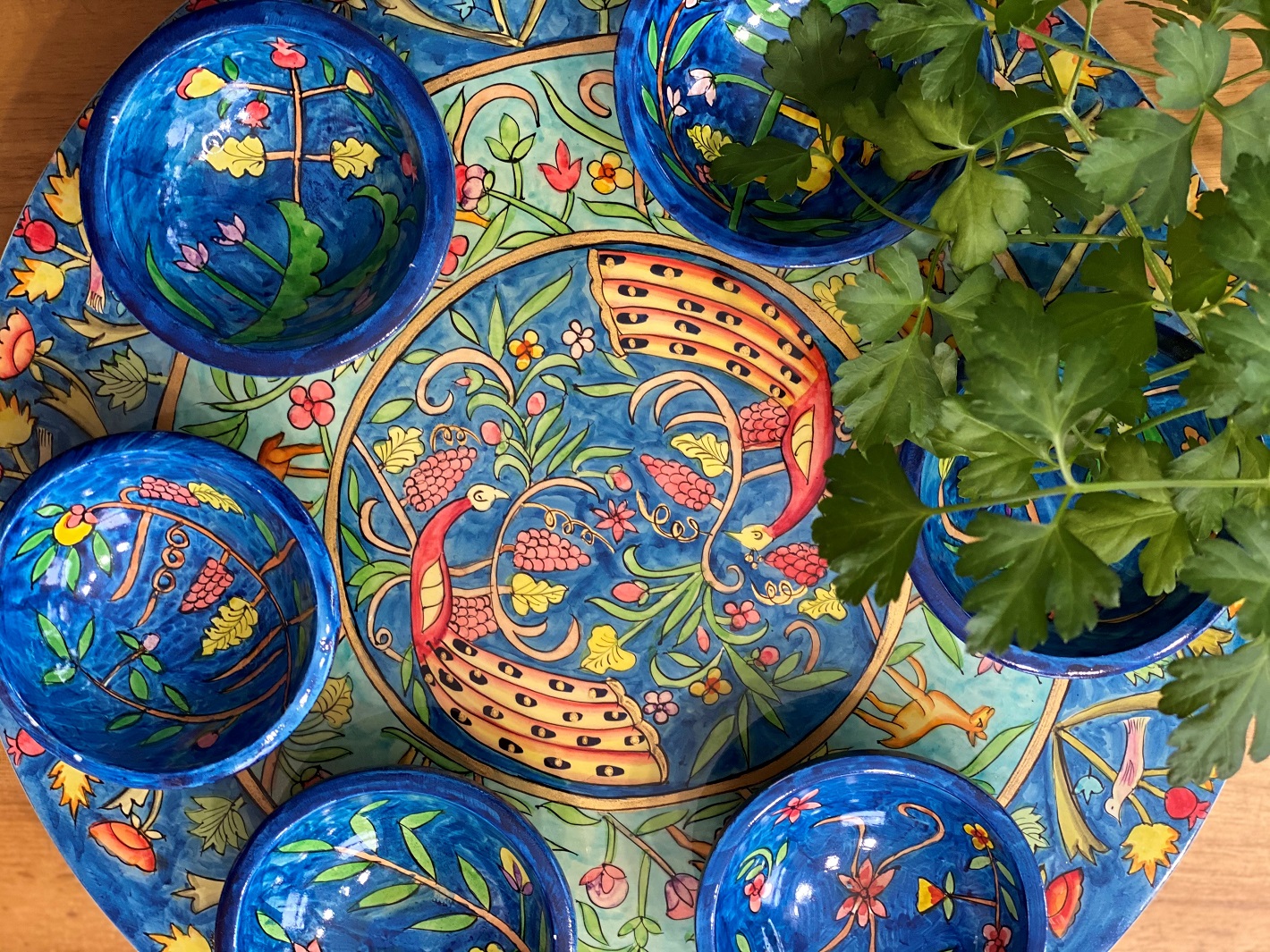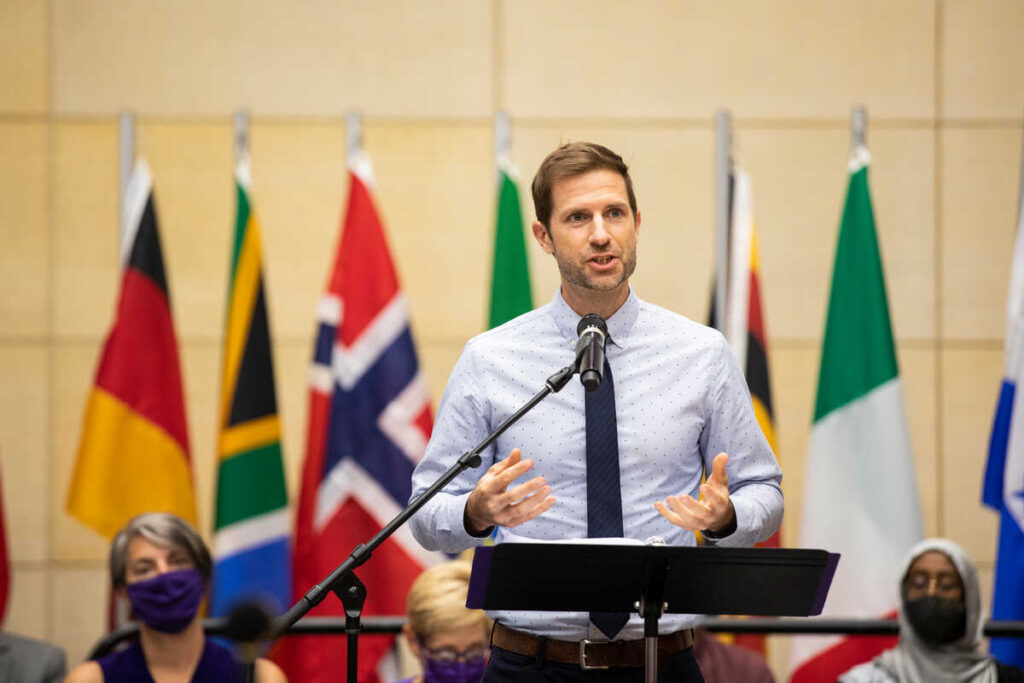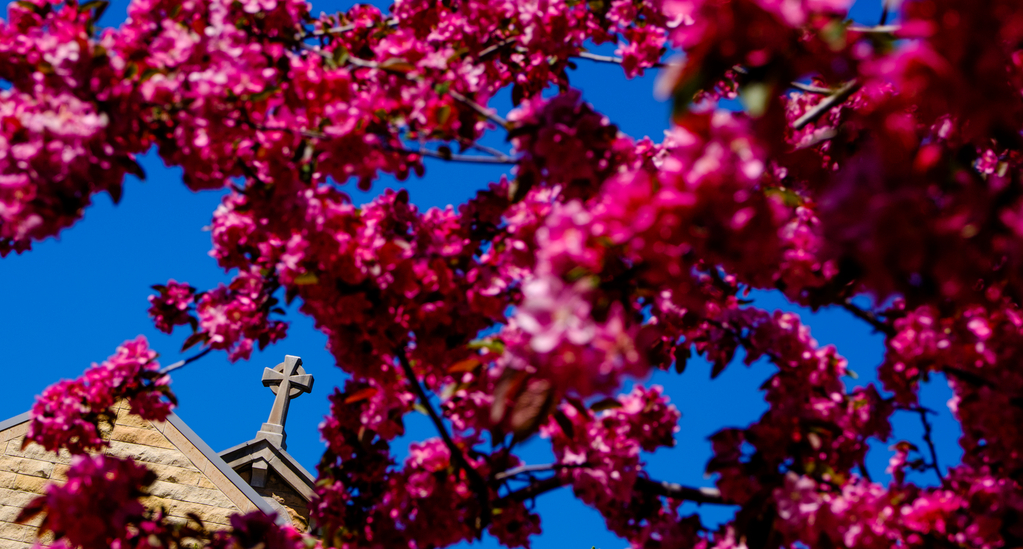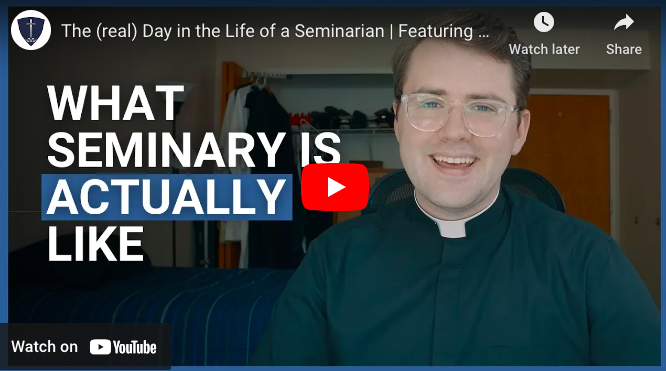Jews around the world will celebrate the eight-day holiday of Passover starting Saturday night, March 27, with a festive meal, called a Seder, and the retelling of a story that people of many religions have heard: Moses parted the Red Sea and led the enslaved Israelites out of Egypt – away from Pharaoh’s rule – and on toward the Promised Land. It’s a biblical story that still resonates with today’s society.
“Passover is all about justice and freedom and helping one another become free,” said Rabbi Amy Ariel, an associate chaplain with Campus Ministry at St. Thomas. “In this story, we're telling our narrative that comes right directly out of the Torah, the Hebrew Bible.”
The story, from the Book of Exodus, has all the drama, death and intrigue of a Hollywood movie. In fact, see the Oscar-nominated film “The Ten Commandments” starring legendary, Emmy award-winning actor Charlton Heston as Moses and Tony Award-winner Yul Brynner as Pharaoh Rameses.
The biblical story is recounted every year by Jewish families celebrating Passover. “Everybody across the whole Jewish world is going to do this, we're going to have these Seders in our homes, where we can retell this particular story,” said Ariel.
The Newsroom spoke further to Ariel about the story of Moses, what the Passover holiday means for the Jewish people, and what lessons we can learn from its significance.
In a nutshell, what is the biblical story of Passover?
The story is from the Book of Exodus. Moses pleads with Pharaoh to “let my people go” so that the enslaved may be freed. Pharaoh “hardened his heart,” and refused, said Ariel. As a result, God enacted 10 plagues including lice, hail, locusts, as well as the Angel of Death who, according to Exodus, Chapter 11, would see to it that “every firstborn son in Egypt will die.” The only homes the angel would “pass over” and spare their sons were the homes that specially marked their doors – the homes of the enslaved, who believed in God’s will.
After Pharaoh’s firstborn son died in this act, Pharaoh finally agreed to free the enslaved, and then, at the last minute, as the Israelites were fleeing, Pharaoh changed his mind and sent his soldiers after them.
Has Passover always been observed with a Seder in people’s homes?
The way that Passover was observed and the way that the text reads in the Hebrew Bible, people are bringing offerings to a central space, coming together as a pilgrimage. Jewish people would all come to a central place and be together as community, but with the destruction of the temple in 70 CE we don't have a central place to come to anymore, so the rabbinic sages had to figure out what are we going to do, how are we going to solve this problem? How do we keep us together as a people when we don't have a common place, when we don't have a common land?
It became this ritual of a Seder by instituting a ritual that happened in people's homes. It's all going to be prayer and storytelling and study that is going to take the place of an animal sacrifice. With our children, we are going to have this experience together.
Just like it says in Exodus 13, “tell your child on that day, this is how it was for me. When God liberated me from Egypt, when I left Egypt.” We tell the story in the first person, and so the story that our children hear isn't this thing that happened, really, really long ago to somebody I don't even remember, it's this thing that happened to me. I have been oppressed, I have become free, somebody helped me, I have helped other people. You are now the inheritor of this story. It becomes: “How was it for you, when you were liberated?”
If Jews invited someone into their home for Passover, what might they see?
“When you come into a house for a Passover Seder, it's super clean; the cleanest it's been -- spring cleaning on steroids,” said Ariel. “We're supposed to get rid of all the chametz, all of the leftover leavened bits in our lives. This translates symbolically into cleaning everything. We are getting rid of any of the baggage that we've been carrying with us that keeps us from being liberated and free from the past year or any other year.”
There is a multicourse meal, with 15 steps to the Seder. On the table, there's a Seder plate with symbols that help us raise questions to talk about and answer at the Seder. Judaism is all about questions. Some families do kind of a speed Seder that is half an hour to 45 minutes, but many Seders can be six hours long, she said.
"Part of the idea of being free is that we don't have to be in a rush to eat. We don't have to be in a rush in our conversations. We're going to take our time. The 15 steps of the Seder take us through the story of the exodus from Egypt, which isn't intended to be a linear telling of the story. Any sort of journey to freedom doesn't happen in a smooth linear path. History doesn't work like that."
Baby Moses was raised in Pharaoh’s household, an adoptee rescued as a newborn from the Nile River by Pharaoh’s daughter Batya after Pharaoh had decreed death to these babies. What does the biblical story of Moses teach us about freedom and justice?
Pharaoh’s daughter says, "I am going to do this other act of justice. I am going to pay the wages of this woman (Moses' biological mother) who is going to nurse this baby." Pharaoh’s daughter is no fool. She pays Moses’ mother to nurse him, almost as though she is treating Moses’ mother as a free person. I think that has a direct correlation we can learn from.
It shows how do we get past the idea of allyship as just something where I can say “I am an ally, I don’t have to do anything, I can be a good person, I don’t have to be antiracist, I can just be not racist. I don’t have to actually take action, I just have to think the right things.” No, no, no. We have to get out of the place where we are in comfort. We have to go down to the river where things are not looking so good, and as soon as there is an opportunity to do something that is available to us, we have to do it. And when there is a second step of affirming the dignity of another person, or following their leadership, to whatever road we need to take, then we need to do that too. Pharaoh’s daughter is a really great example of that.
What else can we learn and apply to issues today?
I also think Miriam, Moses' sister, is a really great person to learn from. Later in the story when we get across the sea, Miriam pulls out a timbrel (tambourine) and the other women pull out their timbrels, too, and everybody is playing and dancing. Why is this about justice? They are leaving the only place they have known for hundreds of years and as they are packing and deciding what they are leaving behind, Miriam decides to bring a timbrel and the other women do it too. And it is only because of that, that once we get across the sea, that we are able to dance.
As we are doing this work together of liberating ourselves and liberating each other and following each other as leaders in justice, following the leaders of Black Lives Matter, following the leaders of Asian Americans and Pacific Islanders community, we need to also remember that in that liberation, we need to pack our timbrels, as well as our hammers. We need to look for the times that we will be able to dance together and not just the times we are fighting together. It is the dancing together that will allow us to really be together. The goal shouldn’t be that we get through the hard stuff and then that’s it. We do the hard stuff together so that we can dance.







